Clean the grill
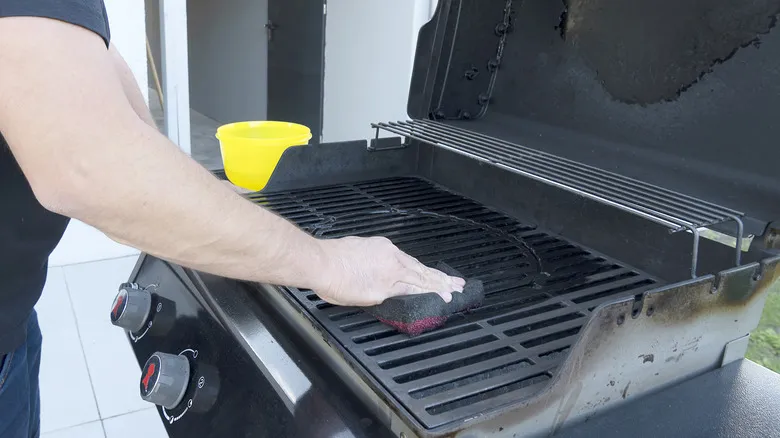
When you're cooking a large, succulent ribeye steak, the last thing you want is for it to carry the flavors of hot dogs, grilled pineapple, and leftover baked potatoes. However, if you don't regularly use effective grill-cleaning techniques, you risk this scenario and potentially worse ones as leftover food particles begin to spoil.
The most delicious ribeye, grilled vegetables, or any other dish tastes best when prepared on a clean grill. Just as you wouldn't cook in dirty pots and pans, grilling on a filthy surface is equally unappetizing.
Moreover, leftover food on your grill can pose health hazards. As the dried and cooked remnants age, they can harbor bacteria and mold, increasing your risk of illness due to the high likelihood of cross-contamination. Additionally, the residue from grilled meats, which leaves black marks on the grill, contains carcinogens that form when meat fat burns onto the surface. A dirty grill also contributes to the frustrating problem of food sticking. When you grill, food can adhere to the surface due to the remnants of old meals.
To prevent sticking, remember to apply some oil to the grill before you start cooking. This simple step will make cleaning easier next time, as it helps reduce food adhesion.
Make sure the grill is hot enough
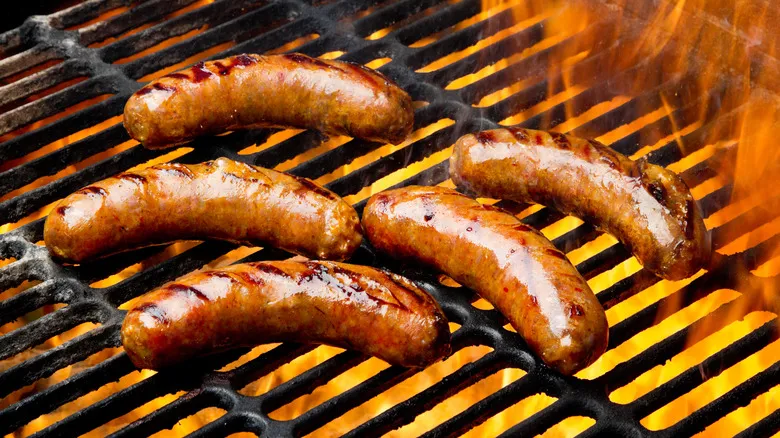
Using a sufficiently hot grill can resolve many challenges that arise while barbecuing. Primarily, you'll find that food tends to stick to the grill less frequently, assuming the grill is clean. The heat generated creates a conductive surface that minimizes sticking. Gas grills, in particular, heat up rapidly, making them a great choice if you're short on time. Additionally, a hot grill produces those appealing char marks that enhance the flavor of grilled dishes.
However, there is a downside. If the grill becomes excessively hot, you risk cooking food that is overly charred on the outside while remaining raw on the inside. If you've ever sliced into a piece of chicken that was crispy on the outside but pink within, you understand the issue. This undercooked chicken poses health risks, as harmful bacteria like salmonella present in raw meat may not be eliminated.
On the bright side, a hot grill can also be beneficial if you ensure that everything is cooked thoroughly. For instance, poultry should reach an internal temperature of 165°F. The higher the grill's temperature, the better your chances of killing off harmful bacteria.
You should grease the grill
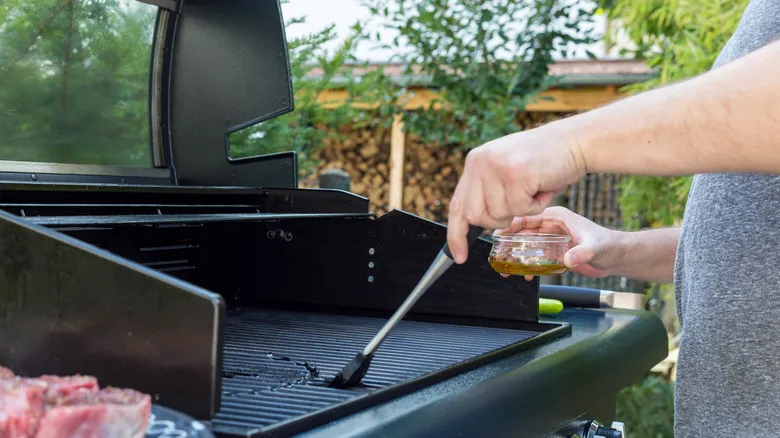
Just as you would apply grease to a pan before cooking, it's equally important to grease your grill for the same reason: to prevent food from sticking.
Fortunately, greasing the grill is a straightforward task. The easiest method is to use an oil-soaked paper towel. Simply dip a crumpled paper towel into your preferred neutral oil and wipe it across the grill. Some of the best oils for this purpose include avocado oil, safflower oil, and refined coconut oil. Remember, in this case, less is more—avoid applying so much oil that it drips off the grill like water droplets, as excessive oil can lead to grill fires.
If you want to elevate the process, consider making a dedicated grill towel. Use a plastic container with a lid to store it. To create the grill towel, take a clean bar towel that is free of lint. Linen is a great option. Roll it up and secure the end with twine, making it resemble a mini yoga mat. This will keep the end closed. Dip the open end of the towel into the oil and wipe it over the grill. When you're finished, store the towel in the plastic container until your next grilling session.
Keep dedicated tools on hand
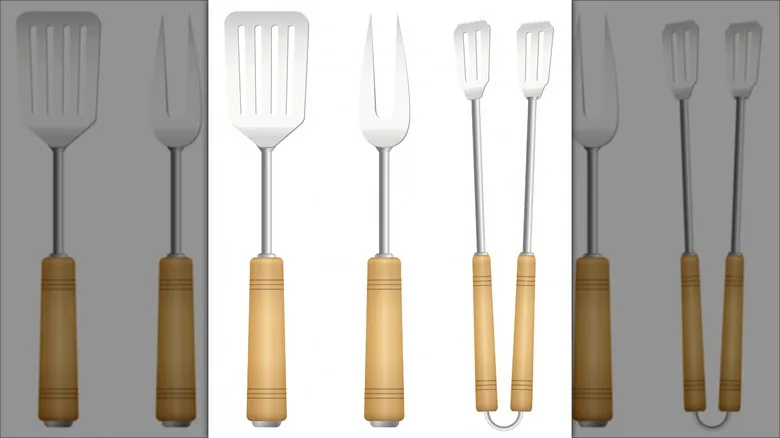
Setting up your grill properly goes beyond just having the grill itself. You also need a set of specialized grilling utensils that will enhance your grilling experience, making it easier, more enjoyable, and safer. A solid basic toolkit should include tongs, a spatula, a grill brush, a basting brush, a thermometer, and grilling gloves. If you have the space, a dedicated cutting board can also be beneficial.
Make sure to reserve these specific tools exclusively for your barbecue area. Regular cleaning is essential, both for the utensils and the surrounding area. Keep your tool storage as clean as a surgical instrument to avoid cross-contamination. If you're cutting raw meat at the grill, that cutting board should be designated solely for raw meat and cleaned frequently to eliminate bacteria, such as salmonella. It's important to keep raw meat separate from other foods. Additionally, if you use your grilling utensils for raw meat, wash them thoroughly before using them for anything else you're grilling. Alternatively, consider investing in a second set of utensils for other food items, like grilled fruits and vegetables.
Allow meat to sit for a bit
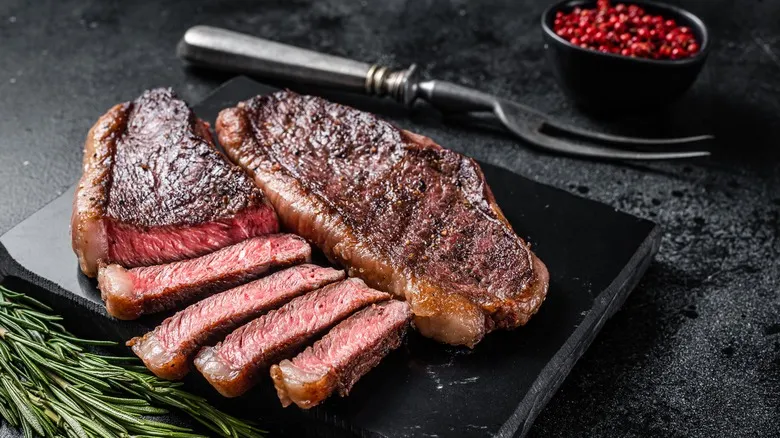
The only thing more enticing than the aroma of a sizzling steak on the grill is savoring that first delectable bite, ideally right after it comes off the heat. At least, that's the common belief. However, diving in immediately can actually be detrimental to your steak—or any meat, for that matter.
There's a concept known as carry-over cooking, which essentially means that the heat continues to cook the meat for a few minutes even after it's removed from the grill. This is why it's important to let it rest for a short while. You don’t need to wait too long; while a roast might benefit from a resting period of 15 to 20 minutes, a steak or chicken typically only requires about 5 to 10 minutes.
And those delicious juices you crave? They’re part of a classic "stewing in their own juices" scenario. The heat causes the muscle fibers in the meat to contract, pushing moisture out toward the surface. While this creates a juicy exterior, it can also lead to dryness as the juices escape. By allowing the meat to rest, those juices redistribute, resulting in a more succulent piece of meat overall.
Muffin tins make serving condiments easy
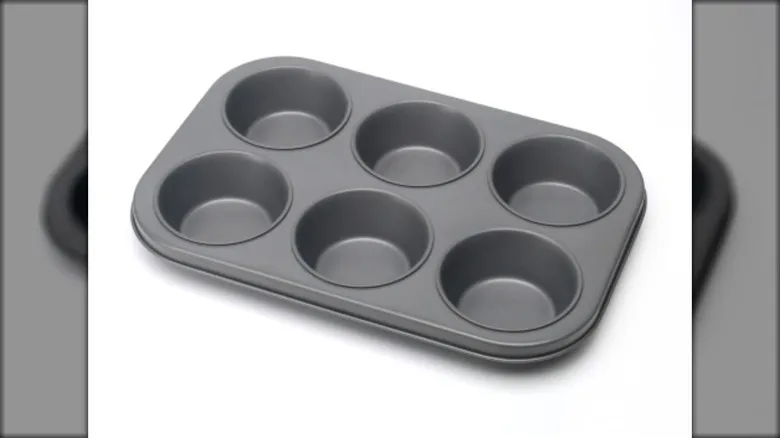
Transporting various bottles and jars of condiments between the grill and the kitchen can be quite a hassle and may lead to a mess. However, condiments don’t necessarily have to stay in their original containers while grilling. In fact, there’s a strong case for transferring them into something more convenient for both carrying and serving.
Enter the muffin tin. Depending on its size, you can easily allocate individual cups for ketchup, mustard, mayo, relish, sliced onions, sliced tomatoes, and more. If you’re concerned about running out during a large gathering, simply prepare two (or more) muffin tins.
This approach offers several benefits. Firstly, it eliminates the need to lug around multiple bottles and jars. Not only does this reduce the risk of dropping them, but it also minimizes the chances of multiple hands touching the containers. The best outcome might just be some fingerprints, while the worst could lead to cross-contamination.
Secondly, once you’ve finished grilling, all you have to do is wash the muffin tin and store it away for next time. There’s no need to juggle bottles and jars, just a straightforward clean-up with no risk of broken containers or spilled condiments.
A grill basket is your friend
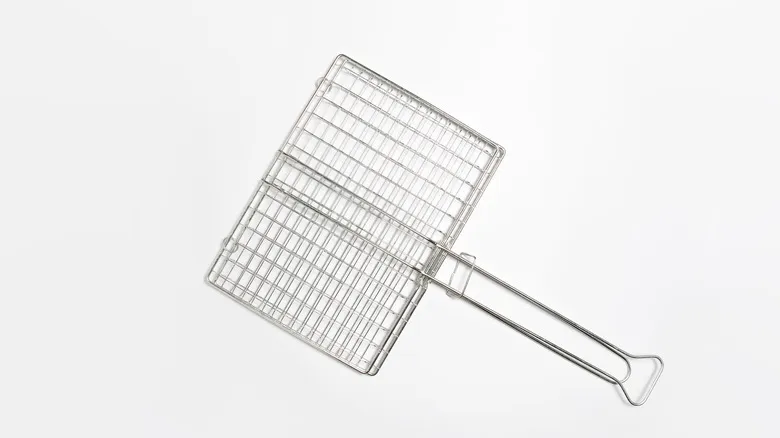
Foods that are thicker, such as steak or chicken breasts, tend to stay securely on the grill. But what about the accompaniments, like sliced peppers and onions for fajitas? How can you cook those without them slipping into the flames? The answer is a grill basket.
A grill basket is a square metal container with holes, often made from durable wire mesh. Regardless of its design, its purpose remains the same. When you have smaller food items to cook, such as potatoes, bite-sized meat pieces, or chopped onions, and you want them to absorb that delicious smoky flavor from the grill, you simply place them in a grill basket. This basket is then set over the barbecue, allowing the food to cook without falling into the coals while soaking up that hickory smoke flavor.
While this tool may seem simple, it can transform your barbecue recipes. After grilling peppers and onions in a grill basket, you’ll never view dishes like fajitas the same way again. It’s definitely worth a try!
Give your food breathing room on the grill
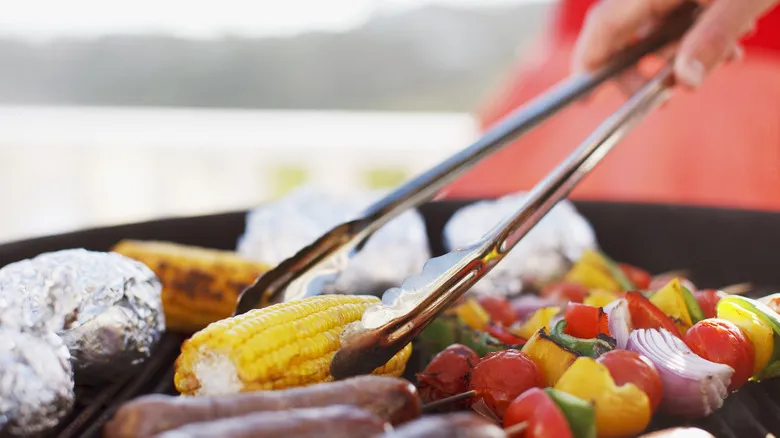
To crowd or not to crowd? That’s the dilemma when grilling meats, shish kebabs, and other dishes. Some novice grillers are tempted to fill their grills to the brim, believing that cooking everything at once will speed up dinner. However, the notion that this will enhance cooking speed, quality, or safety is a misconception.
Let’s break this down. First, a packed grill leads to soggy food, which hinders the Maillard reaction. While the term may be unfamiliar, you’re likely aware of its effects: it’s the chemical process that gives your food a delicious brown crust and juicy interior. The Maillard reaction cannot occur effectively if there’s excess moisture on the grill.
Additionally, cramming chicken thighs, filet mignon, sausage, and pork chops together creates drips. These greasy drips can lead to the flare-ups that sometimes occur while grilling. The risk of flare-ups increases with overcrowding. Therefore, the best approach is to space out your items on the grill for optimal cooking.
Meat and vegetables grill differently
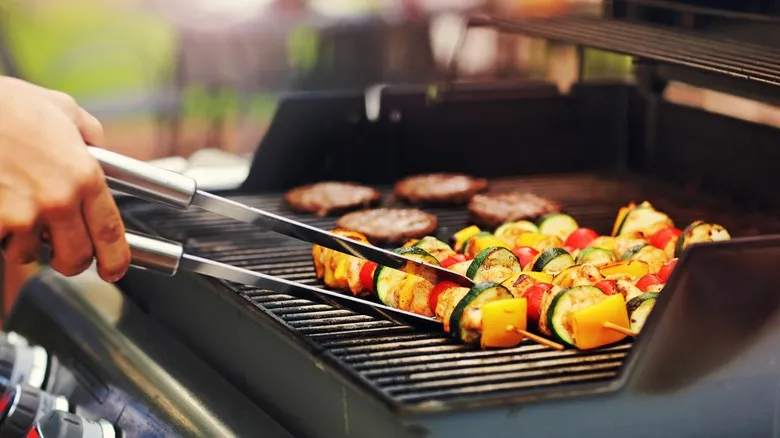
Grilling meat and vegetables simultaneously can be a bit of a balancing act. Each type has its own cooking times and temperature requirements. If you're not careful, you might end up with either charred vegetables or undercooked meat, and that's just one of the many pitfalls you could encounter while grilling.
For vegetables, aim to grill them at temperatures between 400°F and 425°F, which is considered medium-high heat. Keep the lid off to allow the vegetables to sear nicely on the grill grates. Once they're finished, transfer them to an area of indirect heat to keep them warm.
In contrast, the grilling temperatures for meat can vary significantly based on the type of meat. For instance, a thick steak should be cooked at a high temperature, reaching an internal temperature between 115°F and 150°F, depending on your desired doneness. Thinner steak cuts may only need medium heat. Other meats, such as chicken, also have specific temperature requirements, which means you could be grilling two different types of meat that need different heat levels. Therefore, it's wise to consult your grill book for the best practices when it comes to grilling.
Good marinades makes a difference
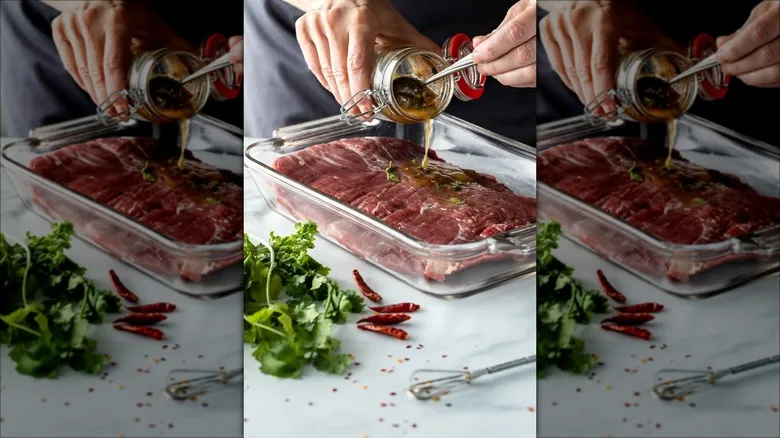
Ideal marinade recipes for grilling are fundamentally quite straightforward. They typically consist of a bit of fat, such as olive oil, some acid, like lemon juice, and a variety of spices and herbs. These elements not only enhance the flavor of your meats and vegetables but also create a delightful combination when the marinade's taste mingles with the smoky essence of the barbecue. Despite their simplicity, marinades significantly elevate your grilling experience.
The finest marinades contribute to making your grilled meats more tender, juicy, and succulent. The acids work to break down the protein fibers, transforming chicken, beef, pork, and other meats into a buttery texture. The oils, which may include mayonnaise, help retain moisture and juiciness. Additionally, the herbs and spices provide that special something that elevates the overall flavor. It's important to remember that marinades aren't just beneficial for meats; they also enhance the taste of vegetables and even grilled fruits when soaked beforehand.
Use heat zones to ensure cooking quality
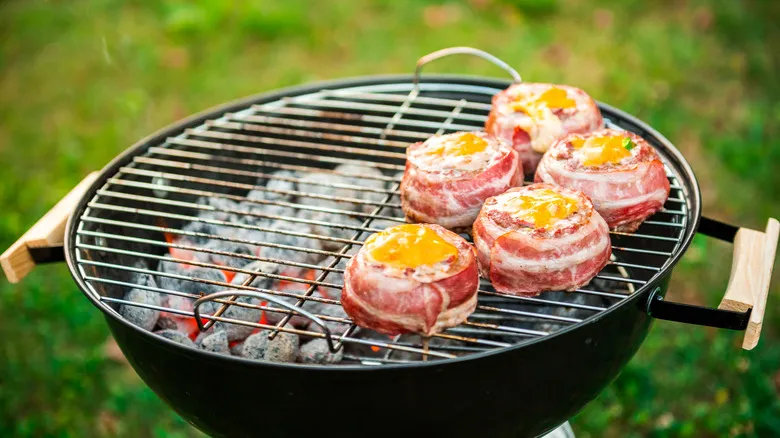
Expert grilling involves understanding both direct and indirect heat. By utilizing these two temperature zones on your grill, you expand your cooking possibilities and the variety of dishes you can prepare. Establishing two distinct cooking areas allows you to prepare entire meals on the grill.
To begin with a charcoal grill, load one side with charcoal while leaving the other side empty. The charcoal side will be the hotter zone, ideal for grilling meats, kabobs, and vegetables—this is the direct heat area. If you want to achieve a nice sear on your meat, this is the spot to do it. For a gas grill, simply adjust the knobs on different sections to create varying temperature zones.
The side without charcoal (or flames in the case of a gas grill) represents the indirect heat zone. When using direct heat, you might keep the grill lid open, but with indirect heat, it’s often necessary to close the lid while cooking. This method is perfect for foods that require longer cooking times, such as whole chickens, roasts, or fish, which do particularly well in this area of the grill.
Charcoal grills add tons of flavor
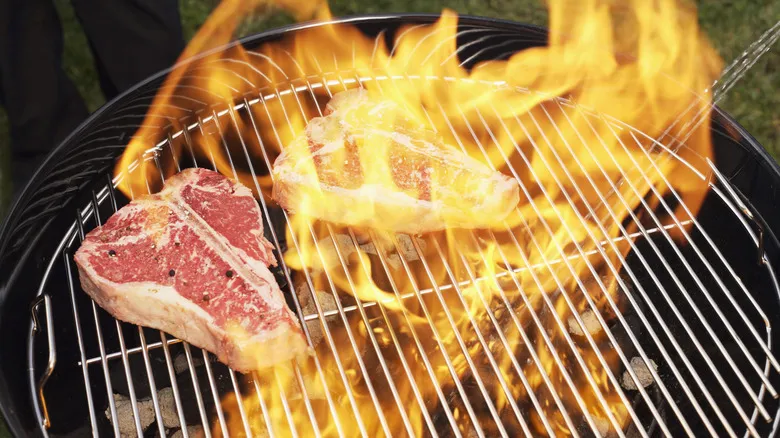
Gas barbecue grills offer convenience for your outdoor gatherings, while charcoal grills provide that nostalgic smoky flavor reminiscent of summer picnics under a twilight sky. The taste difference between charcoal and gas grills is significant and evokes a sense of nostalgia, even in an era dominated by gas grilling convenience.
With gas grills, the flavor can be somewhat predictable unless you master the art of marinades. Charcoal grills, on the other hand, allow for marinades as well, but the inherent flavor of the charcoal, enhanced by various wood chips, introduces an extra depth that gas grills simply cannot replicate.
Additionally, charcoal grills typically reach higher temperatures. This intense heat is essential for the Maillard reaction to occur, which caramelizes the meat. When this happens, you achieve that delightful, crispy exterior that makes enjoying grilled steak or pork chops so satisfying.
Recommended
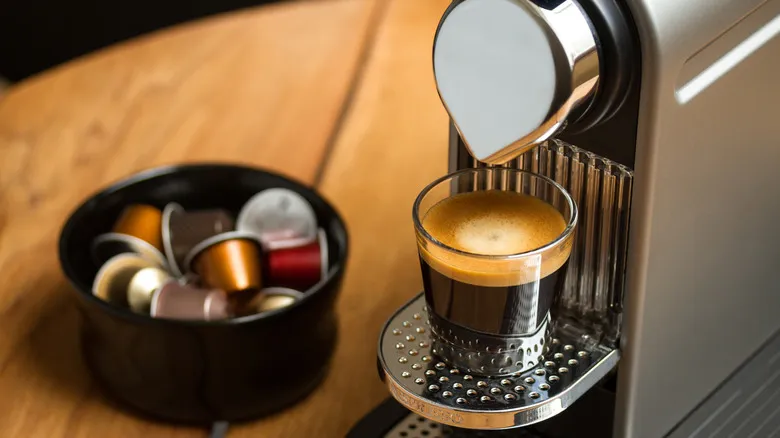
What Do The Numbers On Your Nespresso Pods Really Mean?

How To Perfect Latte Art Without Wasting Your Coffee
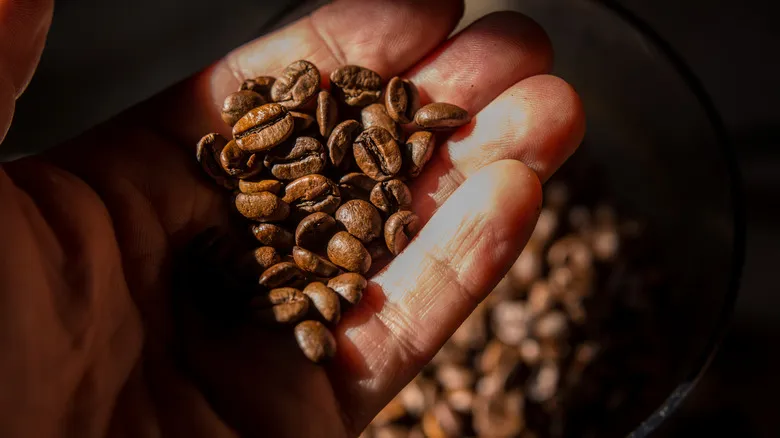
You're Adding Flavors To Your Coffee All Wrong
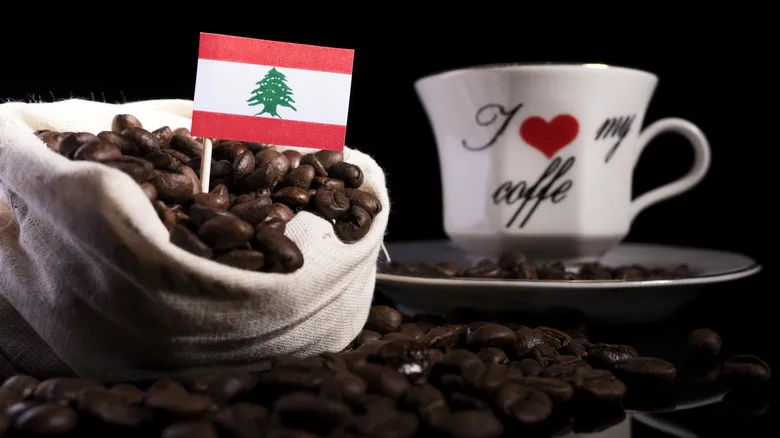
Lebanese White Coffee Contains No Coffee At All. This Is What It's Made Of
Next up

